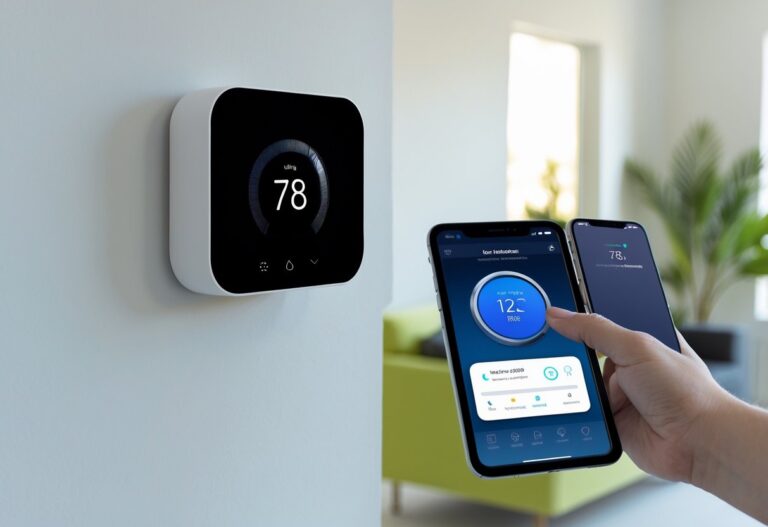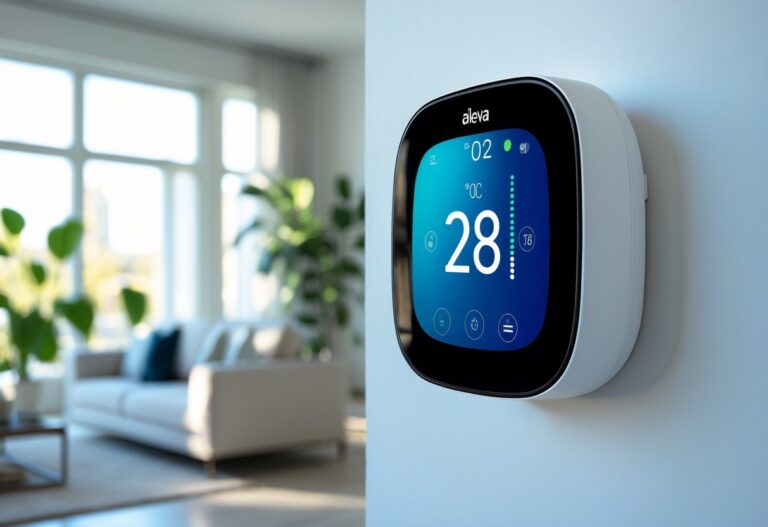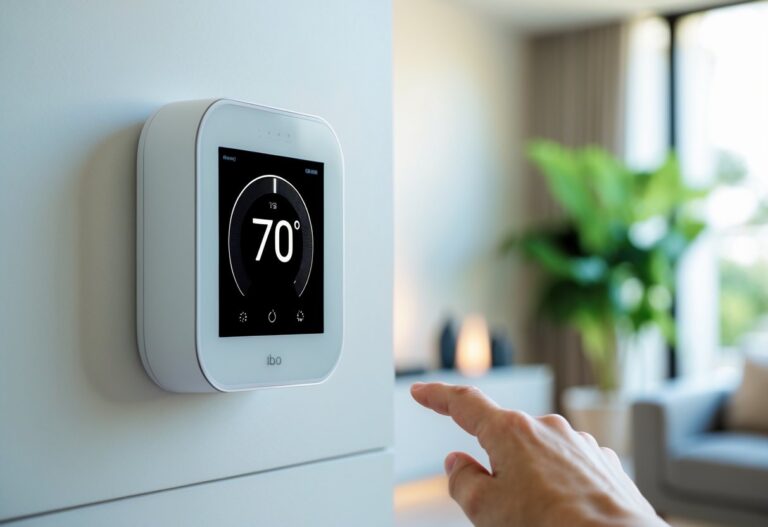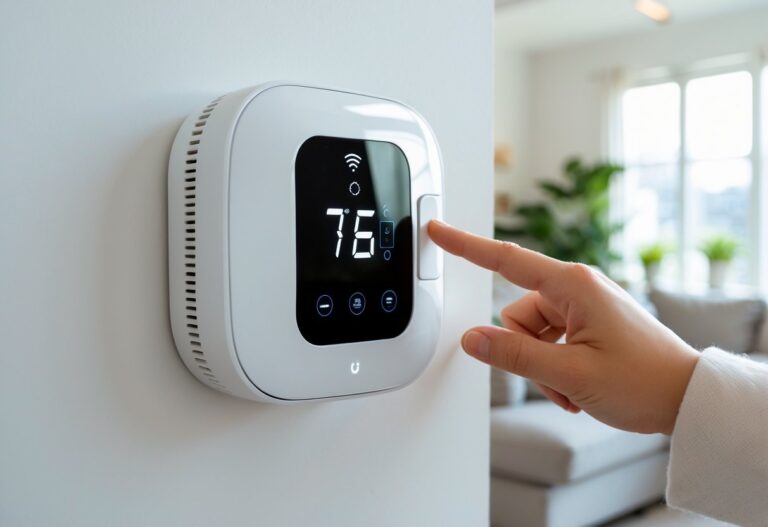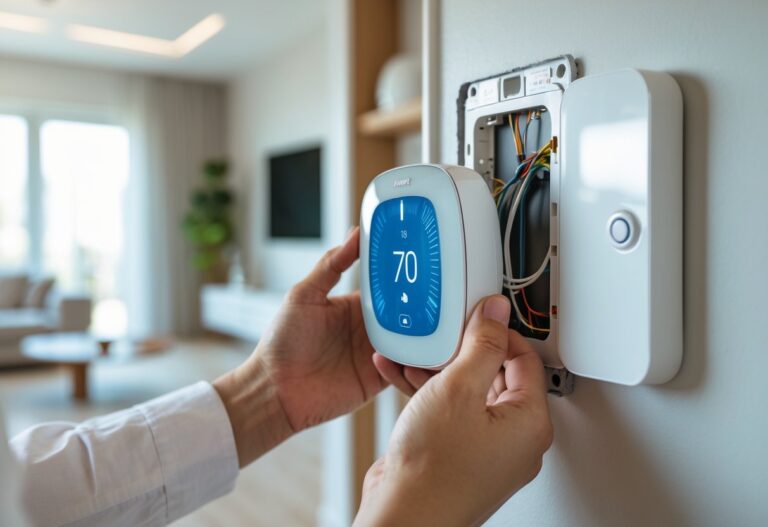Smart thermostats make your life easier by letting you control your home’s temperature from your phone, but you may wonder if these devices are watching you, too. Privacy and security are big concerns today, especially with smart technology becoming more common in homes. Most smart thermostats, including popular brands like Google Nest, do not have cameras built in.
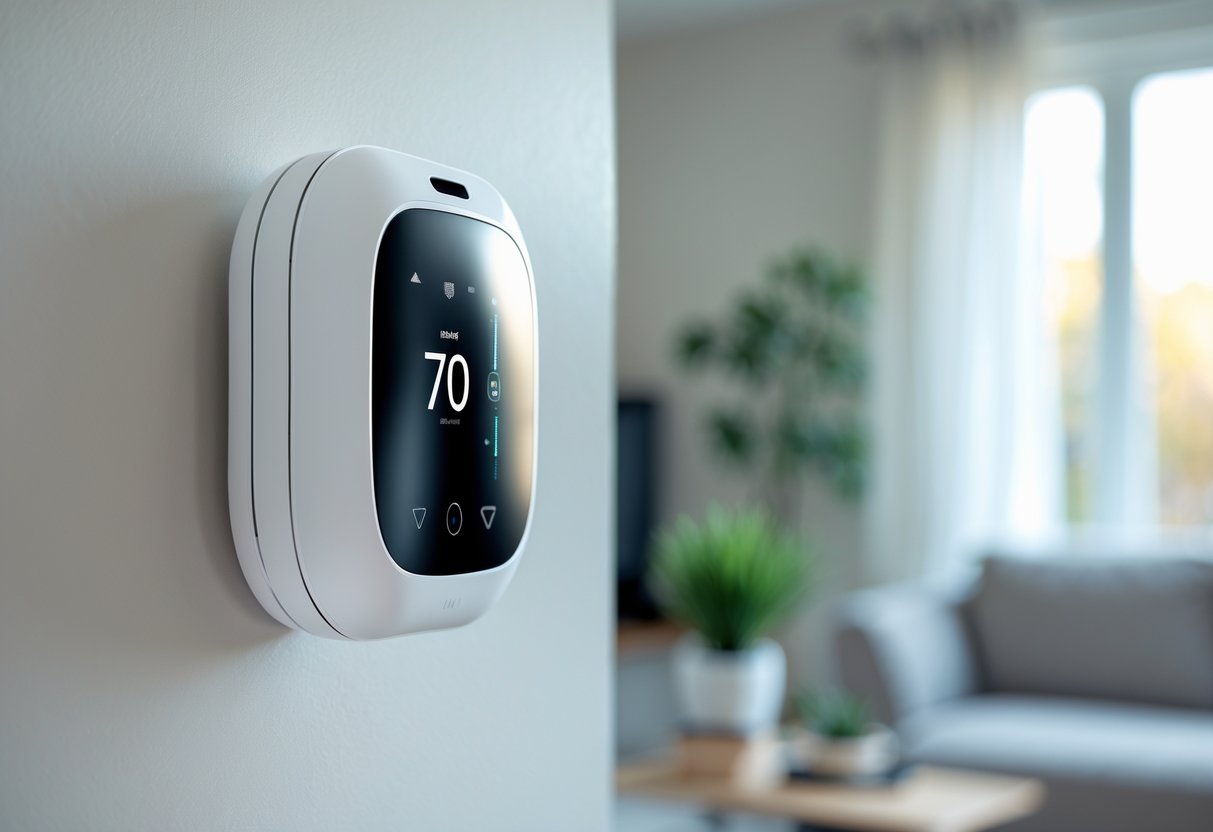
Some rare models include cameras for special features like remote monitoring, but these are not the norm. Understanding the facts about cameras, privacy, and data collection in smart thermostats will help you feel more confident when choosing a device for your home.
Key Takeaways
- Most smart thermostats do not include cameras.
- Privacy and security are important when using smart home devices.
- Smart thermostats offer many benefits even without cameras.
Do Smart Thermostats Have Cameras?
Some smart thermostats do have built-in cameras, but most do not. Knowing the differences can help you choose the right device for your home and privacy needs.
Understanding Camera Integration
Smart thermostats control the temperature in your home and often come with advanced sensors. Some models now include cameras as part of their design. These cameras can offer remote monitoring and help with features like face or motion detection.
If you choose a smart thermostat with a camera, you can see live video from your phone or smart device. This is useful for checking in on your home when you are away.
However, many smart thermostats, especially popular ones, focus on privacy and do not include any cameras. Instead, they use motion and occupancy sensors to detect people, but no video or pictures are taken.
Popular Brands and Camera Features
Google Nest thermostats—such as the Nest Learning Thermostat, Nest Thermostat E, and Google Nest Thermostat—do not have cameras or microphones. These devices use sensors to know if someone is in the room, but there are no video or audio features, so your privacy is protected.
Other smart home devices, like the Nest Cam, are made for security and do include cameras, but these are separate from the Nest thermostat line. Some lesser-known brands or newer smart thermostats may offer built-in cameras for added features like live video monitoring or face recognition.
It’s important to check the specifications before buying, as camera features are always advertised if present. For most major brands, a lack of camera is a key selling point for those who value privacy.
Smart Thermostats With and Without Cameras
Smart thermostats with cameras:
- Offer live video streaming for remote home monitoring
- May include face or motion recognition features
- Used in some all-in-one smart home systems (not common in popular thermostat models)
Smart thermostats without cameras:
- Rely on motion or occupancy sensors to adjust temperature
- Protect your privacy by not taking video or pictures
- Include most models from Google Nest (such as Nest Learning Thermostat and Nest Thermostat E) and other well-known brands
| Feature | With Camera | Without Camera |
|---|---|---|
| Live video monitoring | Yes | No |
| Motion/occupancy sensors | Yes | Yes |
| Privacy focus | Lower | Higher |
For most homes, smart thermostats without cameras are standard and are designed to be energy efficient while protecting your privacy.
Privacy Considerations and Data Collection
Smart thermostats offer you better comfort and efficiency but also collect and use data from your home. The type and amount of information tracked, managed, and shared varies by device and brand.
Data Collection Practices
Smart thermostats collect several types of data. Most record temperature settings, usage habits, and schedules. Some advanced models track your presence using sensors or cameras to adjust heating or cooling automatically.
Devices without cameras rely on motion or proximity sensors. Thermostats with cameras can collect visual and audio data when these features are active. Many smart thermostats also gather information about your device usage, like how often you adjust settings using the app.
Manufacturers may collect technical info like device location, software version, Wi-Fi connection status, and sometimes data linked to your account or smart home platform. Some brands collect anonymized data for product improvement, while others may use data for targeted advertising or share it with third parties for analytics.
Implications for User Privacy
The more data your thermostat collects, the greater the privacy risks. Knowing your daily routines, occupancy times, or even live images can create concerns if the information is not handled securely.
Unauthorized access to your thermostat or its linked app can allow someone to view sensitive details about your home. If your device uses a camera or microphone, the risk of surveillance increases if controls and restrictions are not in place.
Privacy concerns also include how companies store and transmit your data. Encrypted communications, secure storage, and strong account passwords help protect your privacy. Weak settings or poorly protected devices can make your personal information vulnerable to bad actors.
Privacy Policies of Major Brands
Different brands approach data privacy in their own ways. For example, Nest (by Google), Ecobee, and Honeywell outline their data collection and usage policies in their privacy statements. These policies explain what data is stored, whether it is shared with third parties, and how you can access or delete your information.
Most leading brands make their privacy policies available online, often in clear language. Some brands provide transparency reports and let you review collected data through your account. Make sure to compare privacy practices among brands before choosing a thermostat.
Table: Example Privacy Features by Brand
| Brand | Data Collected | User Control Options | Data Shared |
|---|---|---|---|
| Nest | Usage, Location | Delete Data, Download Records | With Service Partners |
| Ecobee | Temp, Occupancy | Adjust Permissions, Opt-Out | For Analytics |
| Honeywell | Usage, Schedule | Delete Account, Set Limits | Rarely |
User Permissions and Preferences
You often have choices about what data your thermostat collects or shares. In most devices, you can turn off features like motion detection, remote access, or voice recording.
Many smart thermostats allow you to review and adjust privacy preferences in their companion app. Changing permissions can limit data collection or sharing, such as disabling camera features or blocking location tracking.
Brands may provide settings to delete your data or erase old records. Check for account privacy options, regular firmware updates, and review app permissions to keep your information as private as possible. Your active management of these settings helps protect your privacy at home.
Security Measures in Smart Thermostats
Smart thermostats include a range of security features to protect your home and personal data. The main areas of protection focus on encryption, remote monitoring controls, and two-factor authentication.
Encryption and Data Security
Most smart thermostats use strong encryption methods such as TLS (Transport Layer Security) to prevent unauthorized access to your data. Encryption scrambles information sent between your thermostat and the cloud, making it unreadable to outsiders. This keeps your home’s temperature settings and usage data private.
Your device also stores data with additional protections. Reputable brands often update their systems to patch security flaws and strengthen defenses. When connecting to Wi-Fi or integrating with voice assistants like Google Assistant, secure connections and encrypted communication help block hackers.
Manufacturers publish their privacy policies and may allow you to control what data is shared. You can usually delete stored data or opt out of certain sharing features, adding another layer of control.
Remote Monitoring and Controls
With remote monitoring, you can adjust your thermostat settings using a smartphone app—even if you’re not home. This gives you flexibility and lets you check your house’s temperature from anywhere. However, remote access also adds risk if your device or app is not secured properly.
Strong passwords are critical. You should use unique passwords for your smart thermostat account and home Wi-Fi. Only download official applications from trusted sources.
Many smart thermostat apps let you manage who can access the device and view its data. Admin permissions and user accounts restrict access, so only trusted people can make changes. Updates to apps and software should be turned on to fix any security vulnerabilities as soon as possible.
Two-Factor Authentication
Two-factor authentication (2FA) is an extra step for logging into your smart thermostat account. After entering your password, you’re asked to enter a code sent to your phone or email. This stops unauthorized users from accessing your thermostat, even if they know your password.
2FA is especially important if your thermostat links to voice assistants like Google Assistant or Alexa. It blocks someone from taking control through your smart home network if they don’t have your second authentication code.
Some brands let you enable or disable 2FA in the device settings. Turning it on greatly lowers the chances of someone breaking into your smart thermostat or app, providing stronger protection for your privacy and comfort.
Smart Thermostat Benefits Beyond Cameras
Smart thermostats offer several useful features that do not involve cameras. They focus on energy use, home comfort, and user experience through smart technology and automation.
Energy Efficiency and Savings
Smart thermostats are designed to help you use less energy and save money on your utility bill. They use scheduling and sensors to learn your habits and adjust temperature settings automatically.
You can set routines for sleeping, waking up, leaving home, or returning. Many models offer real-time energy consumption reports and suggest ways to reduce energy use for extra savings.
Popular energy-saving features include:
- Auto-schedule, which adjusts settings without manual input.
- Home/away assist, which changes the temperature when you leave.
- Reminders to change your HVAC filters for better efficiency.
A smart thermostat can help lower heating and cooling costs by only running your system when needed. You’ll likely notice reduced energy usage over time, especially compared to regular thermostats.
Temperature Control and Home Automation
With a smart thermostat, you have more control over the climate in your home. You can change temperature settings from your phone, tablet, or computer—even when you are not home.
Smart thermostats often work with smart home devices like lights and voice assistants. For example, you can say, “Set the living room temperature to 70 degrees,” and your system will respond.
Many models use geo-fencing to detect when you arrive or leave and adjust the temperature automatically. These tools increase comfort and avoid wasted energy.
You can also connect your thermostat to other smart home technology, such as motion sensors or security systems, for a more complete automation experience.
User Experiences with Smart Thermostats
Most users report that smart thermostats are convenient and easy to use. The ability to control the temperature remotely using an app is especially popular.
People appreciate features like learning schedules and getting reminders for system maintenance. Many find the energy-consumption reports helpful for managing monthly bills.
Some users say the thermostat quickly pays for itself due to lower energy costs. In surveys and reviews, homeowners mention that smart thermostats make their homes more comfortable and help avoid temperature swings.
Having quick access to support and clear installation guides also improves the experience for most people who switch to this newer technology.
